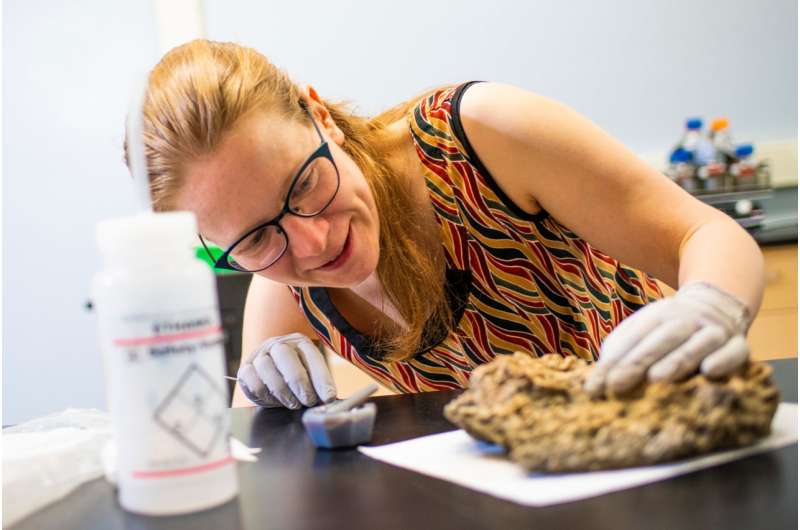Scientists identify new minerals for carbon capture

Research confirms new minerals are capturing and storing carbon in a new paper by University of Alberta geologists and their collaborators. The minerals, members of the hydrotalcite group, are the first outside of the carbonate family to naturally capture atmospheric CO2 in mine waste, important as society continues to forge ways to lower our carbon emissions and combat climate change.
"This research confirmed that hydrotalcites are capable of sequestering atmospheric CO2 in mine waste," said Connor Turvey, who conducted this research during his Ph.D. studies under the supervision of Sasha Wilson. "Hydrotalcites are trapping the CO2 deeper into the tailings where carbonate minerals were unable to form."
Mine tailings are composed of the waste minerals removed from the ground in the mining process. As these minerals are exposed to the atmosphere and to rain water, they can react to form new minerals that trap CO2 from the atmosphere.
The research highlights the potential for improving carbon capture one to two metres beneath the surface of mining wastes, where most sequestration usually occurs. "One thing that this indicates is that the capacity for carbon sequestration at this depth could be improved by providing a more plentiful source of carbon to those depths," added Wilson, associate professor in the Department of Earth and Atmospheric Sciences and expert in economic geology.
The study was conducted at Woodsreef Asbestos Mine in New South Wales, Australia. Carbon capture, utilization, and storage in minerals is of growing importance for both academia and industry. This discovery points to the potential to use mineral waste from mines to sequester carbon more effectively, supporting remediation efforts.
"Merely going carbon neutral is no longer going to be enough to prevent climate change from occurring," said Turvey. "What is now needed is for our world to become carbon negative."
This means that industry must both reduce carbon emissions while simultaneously exploring carbon sequestration to actively draw excess CO2 from the atmosphere—making discoveries like this one more important than ever.
The paper, "Hydrotalcites and hydrated Mg-carbonates as carbon sinks in serpentinite mineral wastes from the Woodsreef chrysotile mine, New South Wales, Australia: Controls on carbonate mineralogy and efficiency of CO2 air capture in mine tailings," was published in the International Journal of Greenhouse Gas Control.
More information: Connor C. Turvey et al, Hydrotalcites and hydrated Mg-carbonates as carbon sinks in serpentinite mineral wastes from the Woodsreef chrysotile mine, New South Wales, Australia: Controls on carbonate mineralogy and efficiency of CO2 air capture in mine tailings, International Journal of Greenhouse Gas Control (2018). DOI: 10.1016/j.ijggc.2018.09.015
Provided by University of Alberta

















